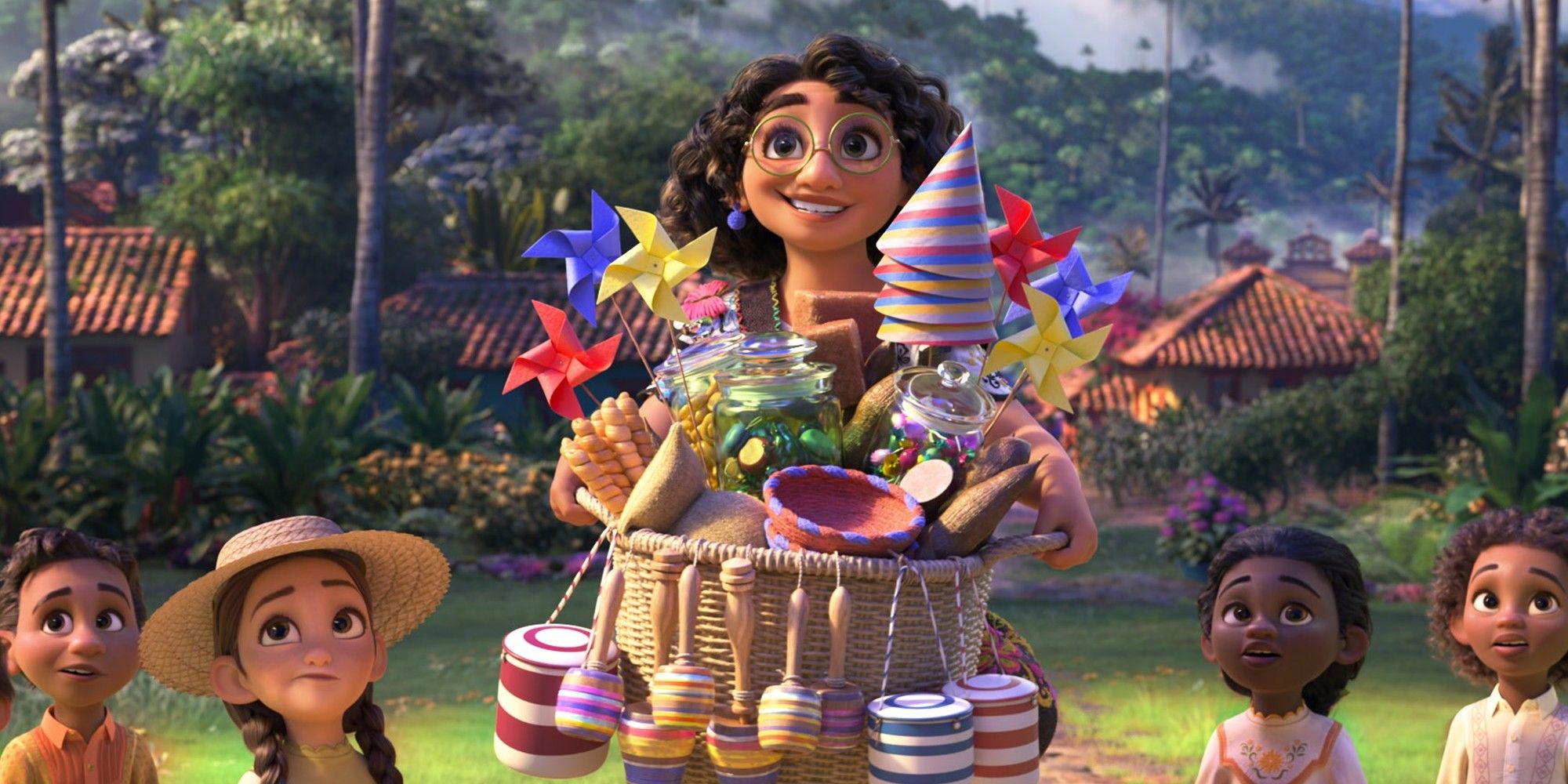Encanto takes place in the real country of Colombia, unlike many other Disney films, which rely on fictional places as their settings. Encanto may contain plenty of Disney Easter eggs, but it deviates from its predecessors in an important way. It is the story of the Madrigal family who lives in a magical place called the Casita. Mirabel is the only one born into the family who doesn’t have her own magical gift. The journey Mirabel goes on is one to save her family and their home from the force threatening Casita’s magic, all while drawing on the inspiration South American landscape.
The displacement the magical Colombian family faced due to “The Violence” they experienced immediately tells viewers that they are watching a movie not just set in Colombia, but about Colombians. This is a marked change from the often racist, mish-mash of cultures Disney has been heavily criticized for using, which has resulted in controversial Disney films like Dumbo. The Colombian setting is also made apparent by the biodiversity, food, music, and clothing seen throughout the film, which takes great attention to detail.
Encanto doesn’t take place in imaginary countries or fictional villages the way Aladdin and Frozen do. It also doesn’t mash multiple Latin-inspired cultures together the way Elena of Avalor does. It takes place in Colombia, and the creators make this extremely apparent. Viewers who notice the plants surrounding the Casita will see wax palms, which are Colombia’s national tree, and coffee plantations. Antonio is also surrounded by tapirs, capybaras, coatis, toucans, and a jaguar, all of which are characteristic of South America and the Amazon – which extends through Colombia. Audiences are also treated to a scene about Caño Cristales, the river of the seven colors, located in Sierra de la Macarena in Colombia.

The creators also made sure the film about the magical Casita house feels like it takes place in Colombia and not just because of its naturalistic setting. Mirabel’s outfit pays tribute to Vélez. Her backpack was inspired by the Wayuú people of Colombia and Venezuela, and other characters wear vueltiaos, ruanas, and guayabera shirts. Fritters and ajiaco Santafereño are shown, and the characters stress the significance of arepas. At the start of the film, Mirabel is also given pots from Valle del Cauca. Even more apparent than the food, however, is the music. Music is immensely important to many Disney films, and Encanto’s is heavily attentive to Colombian culture. Vallenato is mixed with the accordion in a love letter to various regions of Colombia’s music which draws from Indigenous people, Africans, and Europeans. Audiences also noticed salsa, which is not native to Colombia but is still commonly heard, and champeta, which was founded in Colombia. This makes it one of Lin-Manuel Miranda’s better movie musicals.
Besides the visuals and music created by the setting, Encanto also makes a large effort to show Colombian culture is the basis for the story. When The Violence catches up with the Madrigals, their Abuelo is killed, and a magical candle keeps Abuela and her children safe after they are forcibly displaced from their hometown. The candle then creates the magical home that has granted them safety and gifted them with their magical powers for multiple generations. This is an overt acknowledgment of the turmoil that Colombia has faced. Wisely, Disney chose not to ignore the country’s painful history, but unlike most other Hollywood films that feature Colombia, Encanto doesn’t focus on portraying the country as inherently violent. Instead, it opts for the story of a family with magical gifts struggling to save their home with all the music and whimsy of a classic Disney film. The bright colors and upbeat tone of the film helped Colombian audiences feel better represented because the heart of Encanto not only takes place in Colombia, but it is about Colombia without relying on stereotypes.




